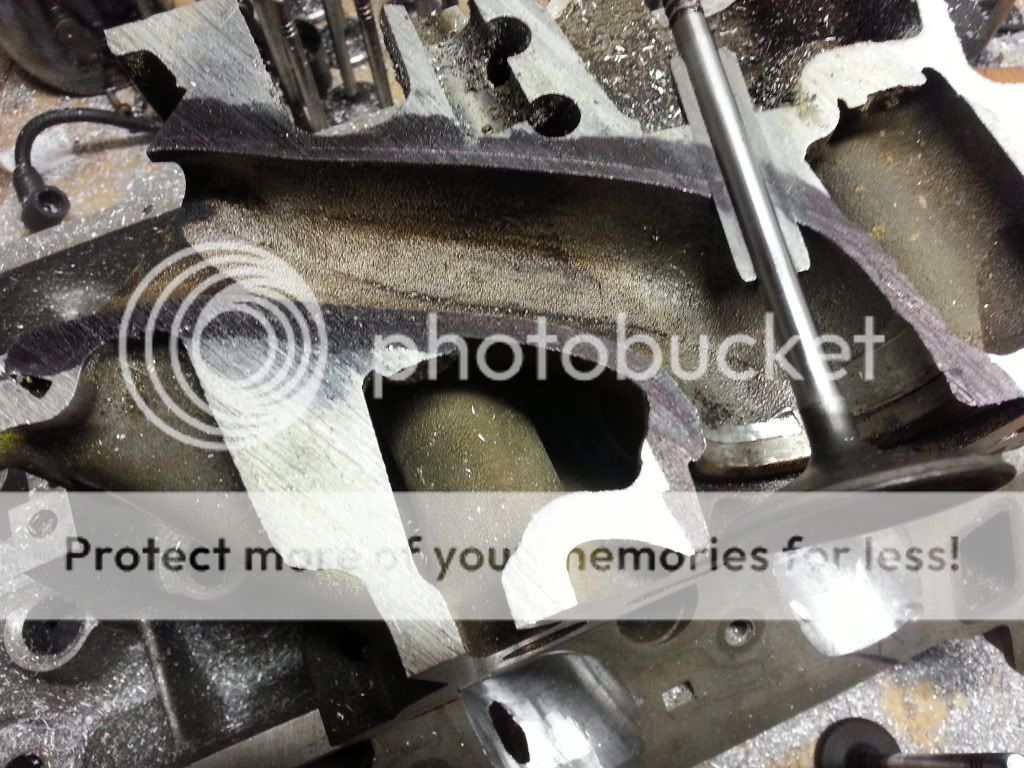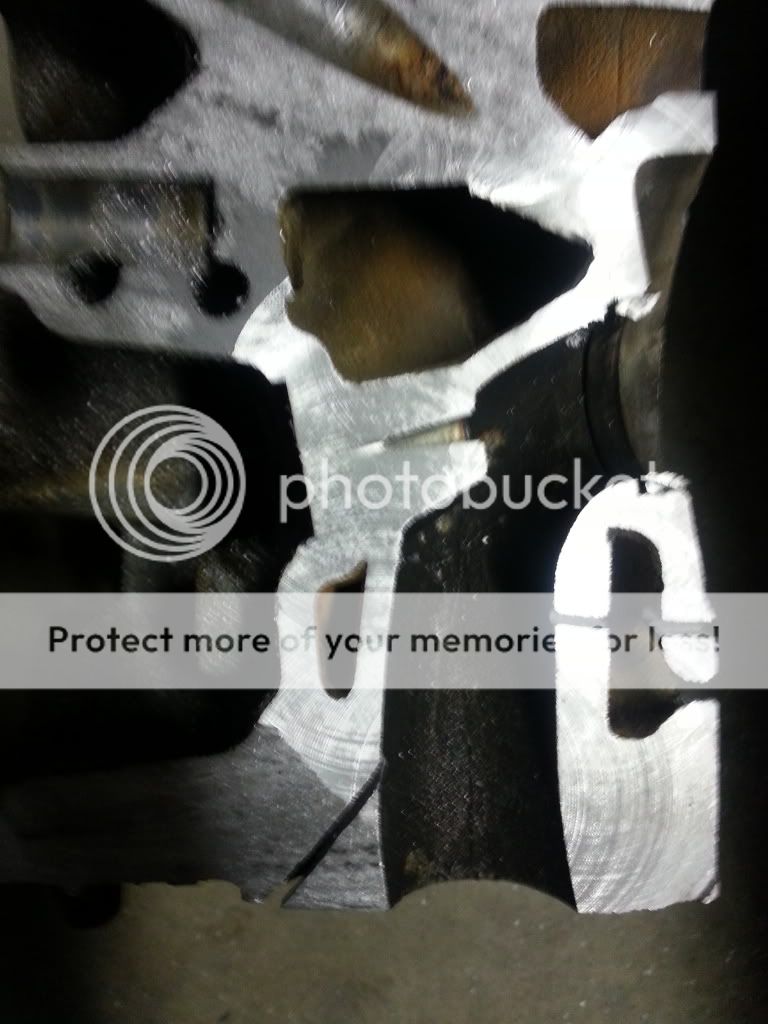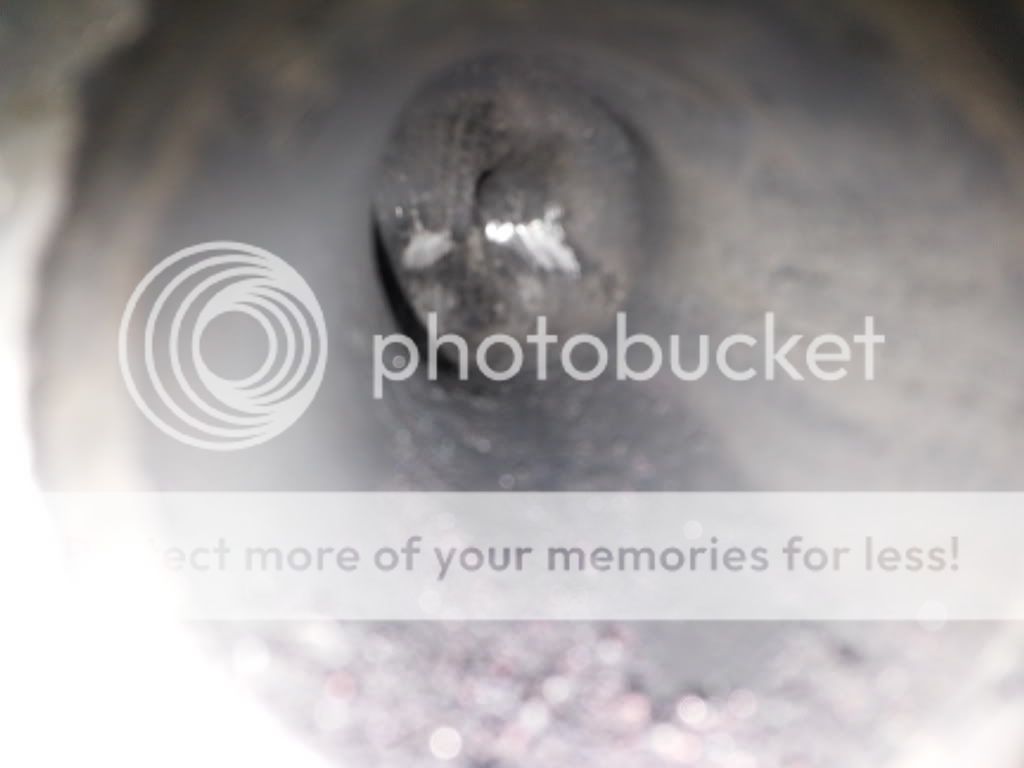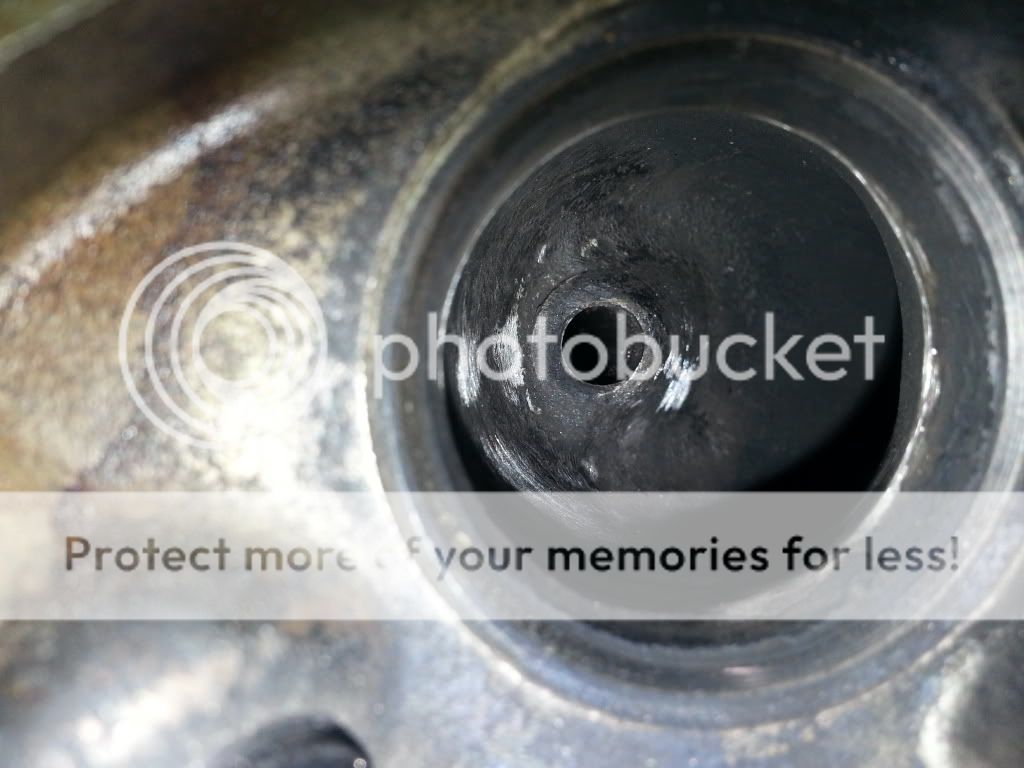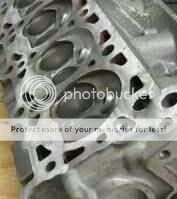Here are a few quotes from a known, very well respected modular head porting guru. Im not stalking but thought his reply to a members question about a npi head combustion chamber would be a nice add to this thread.
Yeah Benny might have worked over a couple of sets of these, even got some Ford engineers using them on their personal rides. No quench on this casting, they went to a quench on the replacement opposite the spark plug but it could still use a small quench added on the plug side from the piston top evidence I see. I plan to double quench the race set here and make it like a figure 8 shape, it needs all the compression it can get. Not too many people racing these earlier heads anymore but the intake port actually flows the same with only 2/3 the area of the newer casting. I get 220CFM from that tiny port with very little work. Here is how I modify that swirl dam BTW:
ts called a swirl dam in the Ford world. Remove it completely and you will need to add 6 degrees more spark advance for near zero gain in power. You can lay it back at a 45 to get another 10cfm or so and not lose the spark advance. That particular early casting really wakes up with a simple 3 angle valve job, modifying a set of later intake valves to fit (better back angle), and installing a set of the later cams. I did the cams for the fastest NA motor ever run with those heads, and I am currently putting together a motor that should take that record another second faster (welded chambers, 1.84" SVO intake valves, 3.7" bore, E85 fuel, sheet metal tunnel ram)
